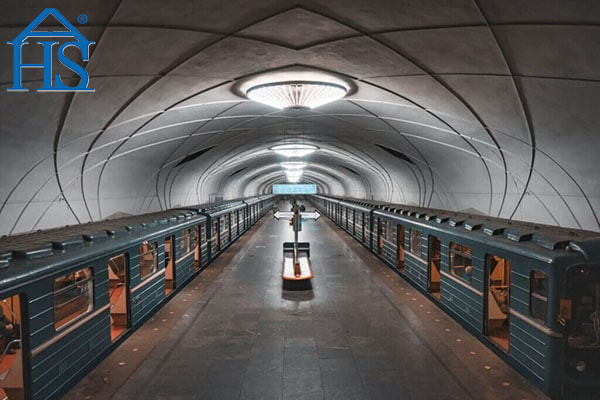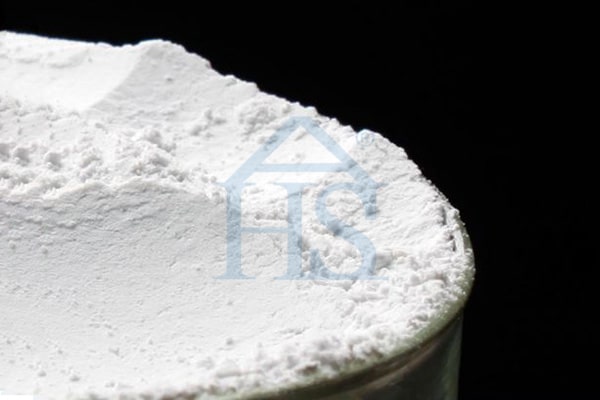It is observed that only the best high-temperature resistant materials are used as refractory materials. The refractory materials are made from a mixture of silicon, Aluminium, und Kalzium. Their low thermal conductivity properties help prevent heat from being transferred away from the furnace. This is important because it results in less energy being needed to maintain a desired temperature for the furnace.
Basis their chemical composition, refractory materials expand when they are exposed to heat. Magnesium oxide is by far the most commonly used material and it has a high coefficient of expansion. A typical manufacturing process for refractory materials involves steps like crushing and grinding, followed by forming, firing, and final processing.
The Best Refractory Material Uses for Silica Fume
Silica fume is a by-product of the manufacturing process of silicon. Elemental silicon is produced by heating quartz at extremely high temperatures, the SiO2 (Siliciumdioxid) thus produced further oxidizes and condenses to give out silica fume. This article will discuss how refractory material can be made from silica fume.
Feuerfeste Materialien werden zur Herstellung von Metallgussformen und Gießereigeräten für die Metallproduktion verwendet. Sie werden auch in Hochtemperaturöfen zur Herstellung von Stahl oder anderen Metallen durch Schmelzen der Gussteile verwendet.
Hersteller verwenden dieses Material hauptsächlich zur Herstellung von Keramikprodukten. Mit Quarzstaub können viele Arten von feuerfesten Materialien hergestellt werden, einschließlich gießbarer feuerfester Materialien, Vliesfasermaterialien, und Flussmittel, die hohen Temperaturen standhalten, ohne mit der Zeit zu zerfallen.
Silica sand is widely used in the production of refractory castables thanks to its ability to provide better packing. Es benötigt auch weniger Wasser als Sand bei gleichen Fließeigenschaften, wodurch es perfekt für das Sintern bei niedrigeren Temperaturen geeignet ist. Silica sand is also great for facilitating the formation of mullite, was dazu beiträgt, Ihre Feuerbetone noch haltbarer zu machen.
Castables sind stark und stoppen Gase, Schlacke, und Metall daran hindert, hindurchzugehen. Silica-Fume Castables sind am stärksten, besonders bei hohen temperaturen & hohe Dichten. Je mehr Sie Silikastaub in Ihrem Rezept verwenden, desto besser für Ihr Casting-Projekt.
Was ist Silica Fume?
Kieselerde is essentially the by-product obtained from ferrosilicon alloys and silicon metal production processes. Silica fume is popular for its use in concrete. It’s not just ground-up glass – it has other minerals mixed into it as well.
Silica Fume is light and porous, so it’s easy to process with other materials. Quarzstaub kann zur Isolierung oder als Füllstoff in Gummiprodukten verwendet werden, da er dem Material hilft, Hitze und Feuchtigkeit zu widerstehen.
Diese Vielseitigkeit und die Fähigkeit, ein gleichmäßigeres Produkt bereitzustellen, machen Silica Fume zu einem idealen Zusatzstoff für die Herstellung hochwertiger feuerfester Gussteile. Dies liegt daran, dass Silica Fume eine stabilisierende Wirkung auf den pH-Wert hat, reduziert Verunreinigungen, und verbessert die Verarbeitbarkeit des Endprodukts.
Warum Silica-Rauch anstelle anderer feuerfester Materialien verwenden??
It is not uncommon for refractories to be used in industrial settings. Jedoch, not all refractories are created equal. The most commonly used materials are silica sand, brick, Zement, and clay. Jedoch, these materials can take up excessive space and produce harmful gases.
Silica fume is a type of industrial mineral that can be found in abundance – it is an offshoot of the production process for silicon metal. Because it takes up less space than other materials and its production process does not release harmful gases into the environment, silica fume has been becoming more popular as a choice for industrial minerals over time.
Modus Operandi for bonding
Silica fume reacts with water to form silanol groups (Si-OH) on the surface. These groups condense at 80°C to form siloxane bonds (Si−O−Si). This siloxane network that is formed under low temperature at room temperature starts to break down at 250°F.
Außerdem, silica fume provides high strength under different temperatures. Silica fume helps increase the strength of castable products at low and high temperatures.
Silikatrauch ist so besonders, weil er bei hohen Temperaturen tatsächlich mit Al2O3 reagieren und Mullit bilden kann, dank seiner hohen Aktivität. Dies verbessert die Festigkeit und Stabilität Ihrer gewöhnlichen feuerfesten Gussteile. Dank der Kombination aus Design und Materialien, Das Produkt kann eine Kaltdruckfestigkeit von mehr als haben 100 MPa nach dem Brennen bei etwa 1000 °C.
Verwendung von Silica-Rauch in feuerfesten Materialien
Quarzstaub ist ein Nebenprodukt bei der Herstellung von Portlandzement und wird seit Jahrhunderten in feuerfesten Materialien verwendet.
Silica-Rauch hat eine Reihe von Anwendungen:
– Feuerfeste Materialien: Durch den richtigen Anteil an Quarzstaub hält die Bienenstockauskleidung Temperaturen von bis zu 2100 °C stand, ohne sich zu verziehen oder zu schmelzen. Dies macht es zur gebräuchlichsten Form der Auskleidung einiger Öfen und Öfen.
– Silica-Rauch ist eine Art von Substanz, die sich direkt auf die Fließfähigkeit auswirken kann. Je mehr Kieselsäuregehalt die Substanz hat, desto besser wird es fließen. Die Verwendung von Quarzstaub mit niedrigem SiO2-Gehalt kann zu einem höheren Wassergehalt in Gussteilen führen.
– Strukturisolatoren: Silica fume particles can help with heat insulation, as it is thermally stable and doesn’t melt until 2100°C.
– Keramik: Silica fume also helps improve the properties of ceramic materials.
– Silica fume is a very reactive material because of its high surface free energy. Aus diesem Grund, silica fume usually collides with other particles and agglomerates easily. In order to improve its reactivity, some types of undensified silica fume are often used as binders as they have a greater dispersion efficiency. Silica fume is an effective secondary reactant in the production of lower-strength, high-density pouring cement.
Effect of the presence of silica fume on castable containing magnesium oxide
The use of silica fume in magnesium oxide castables has been studied extensively. The potential benefits are reduced porosity, reduzierte Durchlässigkeit, reduced gas leakage, reduced shrinkage, better strength at elevated temperatures, and improved thermal properties. This experiment aims to determine how the presence of silica fume affects the properties of castable containing magnesium oxide. A castable is a type of concrete that cures to produce no surface tension.
Silica Fume and Its Effect on Refractory Materials
Silica fume is a by-product of silicon dioxide, auch als Mikrosilika bekannt. In the manufacturing process, sand is heated to 2,200 degrees Celsius in a furnace to produce silicon and silica fume.
Diese Kieselsäure wird in feuerfesten Materialien verwendet, da sie einen hohen Schmelzpunkt und eine geringe Wärmeleitfähigkeit aufweist. Feuerfeste Materialien werden aufgrund ihrer Hitze- und Oxidationsbeständigkeit in Prozessen wie der Stahl- und Glasproduktion eingesetzt.
Aus diesem Grund wird Quarzstaub häufig bei der Herstellung von Ziegeln und Mörtel für Bauzwecke eingesetzt.
Die Vor- und Nachteile von Silica-Rauch in feuerfesten Materialien
Quarzstaub wird seit über einem Jahrzehnt als Zusatzstoff in feuerfesten Materialien verwendet. Es wird auch heute noch häufig verwendet, Es gibt jedoch einige Argumente für den Einsatz von Silikatrauch. Silica-Rauch ist günstiger als andere Alternativen, es reduziert den Schwefeldioxidausstoß und erzeugt weniger Rauch. Jedoch, Es gibt auch Nachteile bei der Verwendung von Silikatrauch. Quarzstaub kann zu Umweltverschmutzung führen, wenn er bei hohen Temperaturen entsteht, Dies kann jedoch durch die Verwendung von Bindemitteln gemildert werden, um dem Material eine festere Form zu verleihen.
Abschluss: Warum Silica-Rauch eine gute Wahl für feuerfeste Materialien ist
Silica Fume is one of the most popular refractory materials for brick making. It is an important source of silicon dioxide, which forms strong bonds with calcium oxide and aluminum oxide in clay bricks. This makes it a perfect material for use in refractory materials. Zusätzlich, it has excellent insulating properties that make it heat resistant and resistant to corrosion. Another key feature is its low density, which means it takes up less space than other refractory materials like finely ground coal or lime mortar. In addition to these benefits, Silica Fume also has a good thermal capacity and thermal conductivity because of the way that silicon dioxide conducts heat energy quickly from one place to another.
To sum it all, Silica Fume has numerous aspects that make it a perfect choice for refractory materials:
• This material is resistant to heat, fire, and shock.
• With a high heat capacity and low thermal conductivity, this material is the best choice for applications requiring resistance to high heat levels.
• The refractory material offers outstanding thermal stability. It does not crumble under thermal shock.
It is important to choose a trusted silica fume supplier, wie Henan Superior Abrasives Import & Export Co., GmbH. Kaufen Sie noch heute unsere hochwertigen Silikastaubprodukte.





